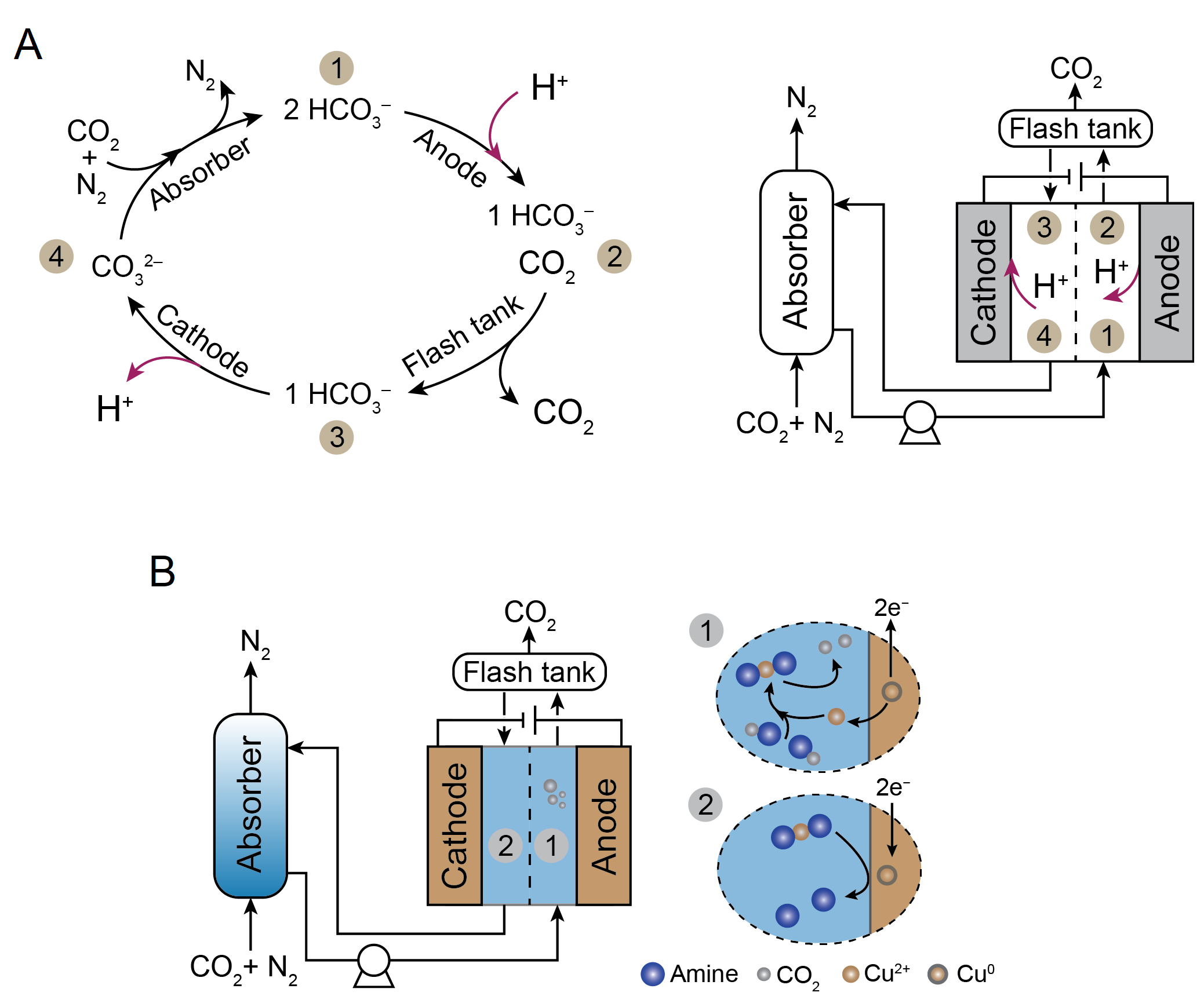The coronavirus pandemic in early 2020 cascaded a frightening threat, which upended familiar routines, disturbed the global economy, and endangered peopleâs lives around the world. Despite scientists long warned this might happen, a little was actually done before the pandemic to prevent the destructive consequences. A similar warning is being repeatedly echoed through the voice of scientists regarding the climate change and its multiscale devastating impacts on the planet and humanâs life. Designing any action plan to mitigate climate change must include a detail strategy to lower greenhouse gas emissions especially carbon dioxide (CO
2) as repeatedly cited to have the most significant contribution to the observed increase in global average temperature since the mid-20
th century.
Electrochemistry, a key part of the 2019 Nobel Prize in Chemistry, is believed to be a powerful tool for designing diverse CO2 mitigation approaches, offering a unique advantage in the future, when the electrical energy is mostly generated by renewable; the carbon footprint and the cost of the electrochemical processes would be minimized. In this context, electrochemically driven processes for carbon capture and storage (CCS), as a new frontier within the electrochemistry and climate change framework that has drawn significant attention in the last few years, could be an attractive approach to either avoid further release of CO2 by capturing it at the source point or to reduce the atmospheric CO2 level through a direct air capture process.
In this talk, two recently developed electrochemical based processes for CCS, namely proton concentration process (PCP) and electrochemically mediated amine regeneration (EMAR), will be discussed and recent advancements in process developments and scale up will be provided. In short, in a PCP, the pH sensitivity of CO2 hydration is leveraged such that CO2 is absorbed as bicarbonate and carbonate ions at high pH values and desorbed as gas at low pH values in an electrochemical cell with proton intercalating electrodes (Figure 1A). The EMAR process scheme is similar to that of the state-of-the-art amine-based thermal scrubbing processes, but the high-temperature desorber (normally operating at 120 oC) is replaced by an electrochemical cell that operates at moderate temperatures (e.g., 50 oC) in which copper ions are electrochemically generated from a copper plate anode to drive the dissociation of amine and CO2 toward CO2 desorption. Once the gas is flashed off, the CO2 lean stream is regenerated via the electrochemical plating of copper on the cathode from the copper-amine complex (Figure 1B). For both PCP and EMAR, the process scheme consists of three chemical or electrochemical transitions that take place in an absorber, an anode, and a cathode. The electrochemical work requirement for the PCP and EMAR to desorb CO2 captured from a flue gas stream are estimated to be 33.2 and 31.3 kJe/molCO2, respectively, suggesting the competitiveness of these approaches. These electrochemical based technologies offer several advantages over thermally driven amine-based processes, including operation at low temperature and the ability to desorb CO2 at moderate pressures, which minimizes the downstream compression costs for CO2 storage. Overall, the developed PCP and EMAR could be impactful electrochemical-based technologies that could effectively mitigate CO2 emission and climate change.
Figure 1. Schematics of (A) a proton concentration process (PCP) and (B) an electrochemically mediated amine regeneration (EMAR) developed for carbon capture from a flue gas stream. For both PCP and EMAR, the process scheme consists of three chemical or electrochemical transitions that take place in an absorber, an anode, and a cathode.


